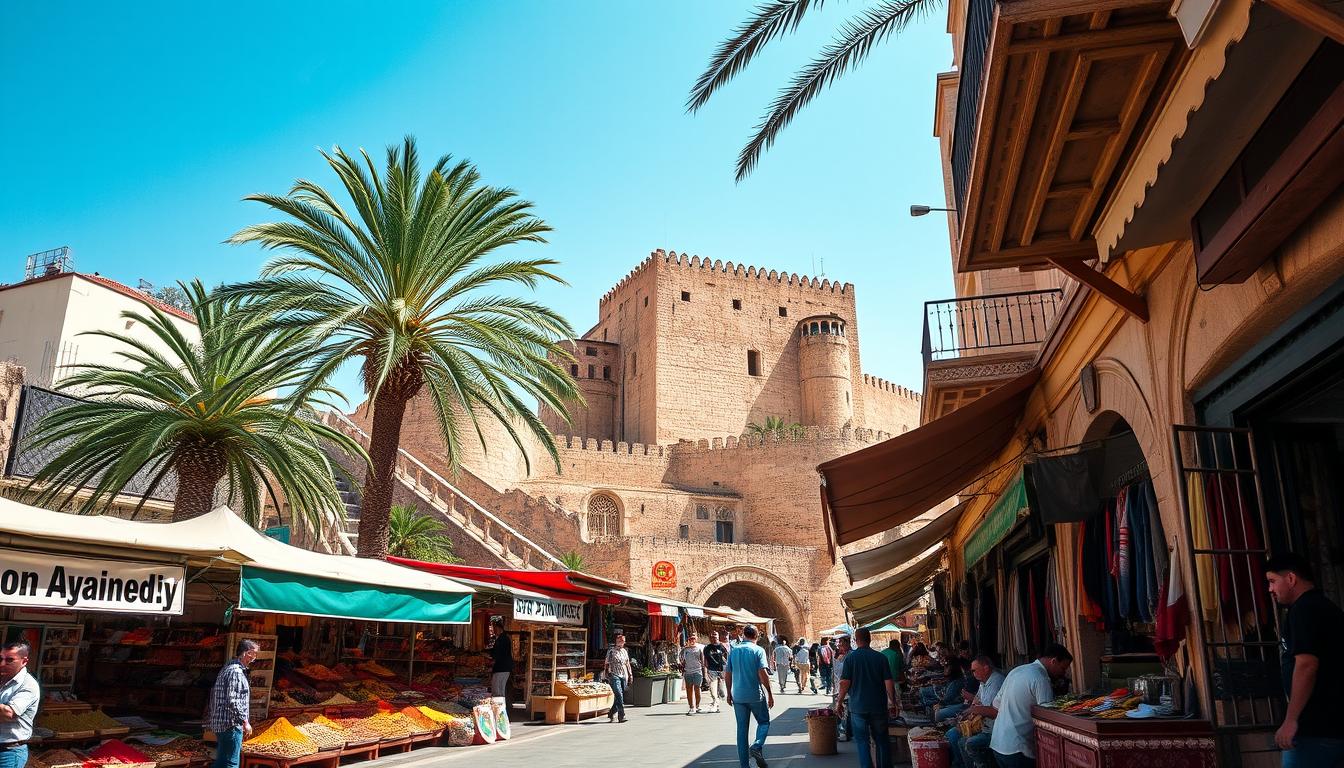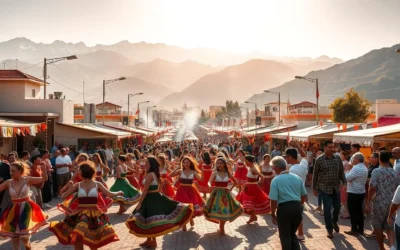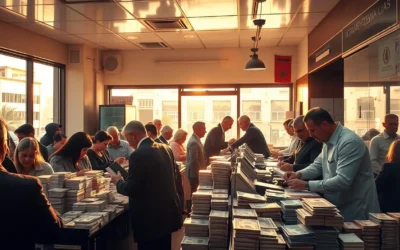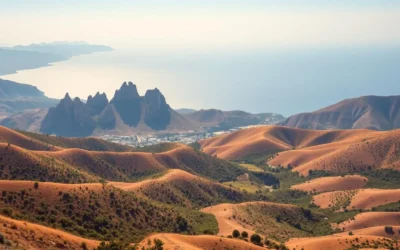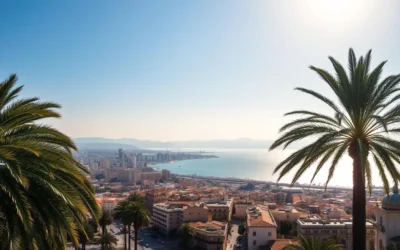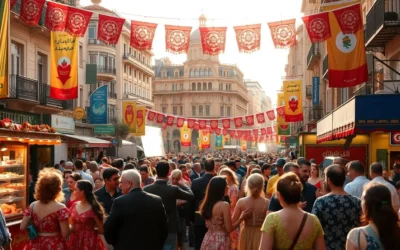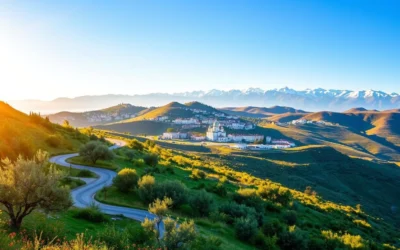✓ Accommodations ✓ Flights ✓ Rental Cars
Tripoli, Lebanon’s second-largest city, sits on the beautiful Mediterranean coast. It’s a mix of ancient buildings, lively markets, and cultural wonders. You can explore the Tripoli Citadel and the Al-Mina harbor, which are both stunning.
But what makes Tripoli truly special? What hidden gems and must-see attractions should you explore to truly immerse yourself in the city’s captivating essence? Let’s find out the best things to do in Tripoli, Lebanon.
Key Takeaways
- Tripoli, Lebanon’s second-largest city, offers a rich blend of history, culture, and stunning Mediterranean architecture.
- Top attractions include the impressive Tripoli Citadel, the vibrant Al-Mina harbor, and the magnificent Mankal Palace.
- The city is known for its well-preserved historical heritage, lively souks, and warm hospitality.
- The best time to visit is during spring or autumn when the weather is mild and perfect for sightseeing.
- Tripoli’s blend of ancient and modern charm makes it a remarkable destination in Lebanon.
Introduction to Tripoli’s Cultural Heritage and History
Tripoli, Lebanon’s second-largest city, has a rich history dating back to the 14th century BC. It was founded as a joint settlement of three Phoenician cities, known as the ‘Three Cities’ or ‘Tri-polis.’ Over time, Tripoli was shaped by various empires, including the Persians, Greeks, Romans, Crusaders, Mamluks, and Ottomans.
Historical Significance of Tripoli
In the 9th century BC, the Phoenicians made Tripoli a key trade center. Later, it was ruled by different empires. The Citadel of Raymond de Saint-Gilles, built in 1103, shows the city’s strategic role. The Great Mosque of Tripoli, from the Mamluk era, combines Islamic and Gothic styles.
Best Time to Visit Tripoli
The best time to see Tripoli is in spring (March to May) or autumn (September to November). The weather is mild, perfect for exploring. These seasons avoid the hot summers and cold winters, making it ideal for sightseeing.
Getting to Tripoli
To get to Tripoli, fly into Beirut’s international airport and drive north for 1.5 hours. Tripoli’s small size makes it easy to walk or use public transport to see its sites.
“Tripoli has been a significant center of ancient trading, Ottoman rule, and Islamic communities.”
Explore the Majestic Tripoli Citadel (Citadel of Raymond de Saint-Gilles)
The Tripoli Citadel, also known as the Citadel of Raymond de Saint-Gilles, is a marvel in Lebanon. It stands tall over the ancient city of Tripoli. Built in 636 CE, it has seen rule by the Mamelukes and Ottomans, each adding to its beauty.
Visitors can see the citadel’s strong walls and enjoy views of the city and Abou Ali River. You can explore its underground passages and see what’s left of its past glory. It’s a place where history and architecture meet, perfect for those who love to learn and take photos.
The citadel welcomes visitors every day from 9 AM to 5 PM. It’s a great place to spend time, whether you’re interested in Crusader history or medieval architecture. It’s a key part of Tripoli’s culture and will surely make a lasting impression.

“The Tripoli Citadel is a remarkable fusion of Crusader, Mameluke, and Ottoman influences, a true testament to Lebanon’s rich cultural heritage.”
Exploring the Tripoli Citadel feels like stepping back in time. You’ll hear whispers of old battles and see the grandeur of the past. This Crusader fortress and its medieval architecture are a must-see. They will leave you amazed and inspired.
Traditional Souks: A Journey Through Time and Commerce
Walking into Tripoli’s old souks feels like stepping back in time. These lively markets take you to the heart of medieval trade. Here, ancient skills and busy sounds make for a memorable visit. Tripoli’s souks show the city’s deep cultural roots, with nine markets each focused on a unique trade.
Khan al-Khayateen (Tailors’ Market)
The Khan al-Khayateen, or Tailors’ Market, is a center for textiles and fashion. Skilled tailors and seamstresses make custom clothes and detailed embroidery. As you explore, see artisans creating pieces that show off Lebanese craftsmanship.
Soap Khan and Local Crafts
The Soap Khan is perfect for finding genuine Lebanese crafts and gifts. This old market is famous for its olive oil soaps. You’ll find soaps, ceramics, brass, and copper items made with traditional skills.
Shopping Tips and Bargaining
- Be ready to bargain – it’s a big part of shopping in Tripoli souks.
- Go early, from 9 AM to 7 PM, to see the markets at their best.
- Enjoy the ancient architecture, with its beautiful arches and historic feel.
- Get lost in the lively atmosphere and take in the sights, sounds, and smells.
Tripoli’s traditional souks give a fascinating look at the city’s history and trade. Whether you’re looking for custom clothes, local crafts, or a cultural adventure, these markets are a must-see in Tripoli.
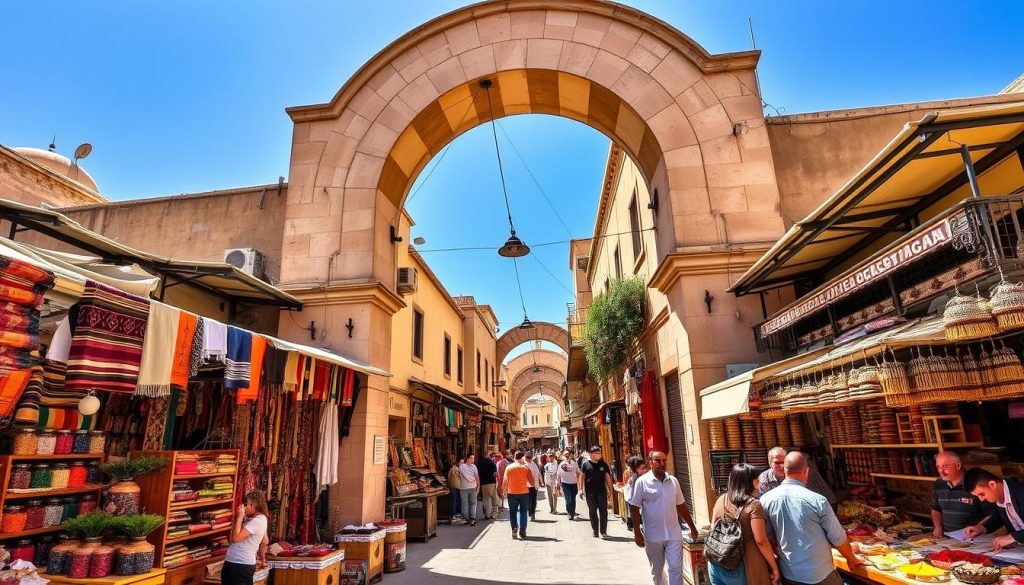
“The Tripoli souks are a true feast for the senses, where the past and present seamlessly intertwine, inviting visitors to discover the city’s enduring spirit of commerce and creativity.”
Discover the Great Mosque of Tripoli (Al Mansouri Mosque)
In the heart of Tripoli, Lebanon, lies the Great Mosque of Tripoli, also known as the Mansouri Great Mosque. It’s a symbol of the city’s Islamic architectural heritage. Built in 1294 CE, this mosque is a key religious site, showing Tripoli’s spiritual and cultural past.
The mosque’s design is intricate and ornate. It boasts beautiful calligraphy, detailed tile work, and a majestic dome. Visitors can explore the calm courtyard, see the elegant minaret, and be amazed by the mosque’s grandeur.
The Great Mosque of Tripoli is open from 5 AM to 6 PM daily. It invites visitors to experience its peaceful atmosphere and learn about Tripoli’s religious history. When you visit, please dress respectfully as it’s a place of worship. Take in the tranquility of this iconic mosque and see the beauty of Islamic architecture.
“The Great Mosque of Tripoli is a true jewel in the crown of Tripoli’s religious sites, showcasing the city’s remarkable Islamic heritage and architectural prowess.”
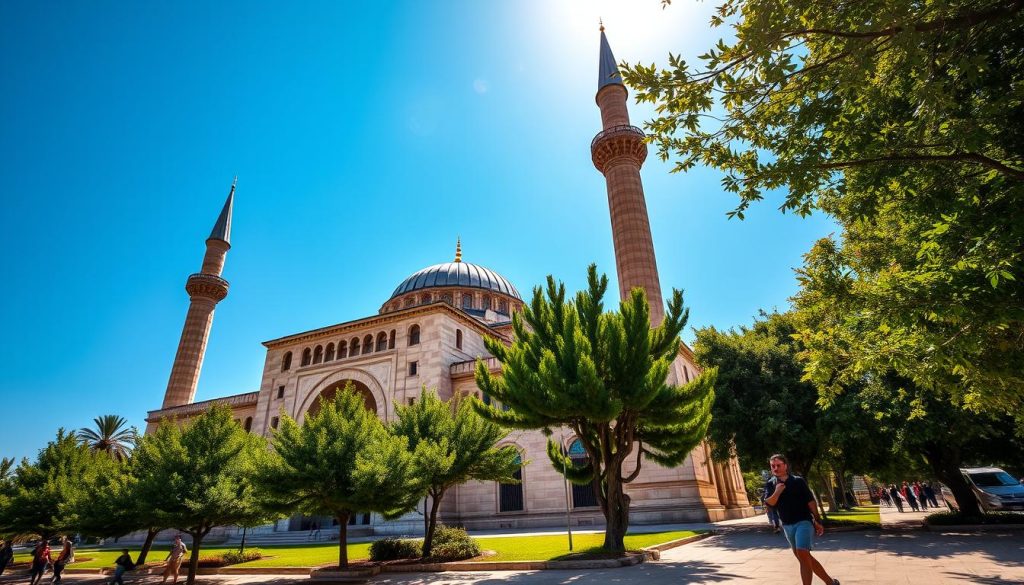
| Mosque Name | Year Built | Architectural Style | Unique Features |
|---|---|---|---|
| Great Mosque of Tripoli (Al Mansouri Mosque) | 1294 CE | Islamic | Intricate calligraphy, detailed tile work, majestic dome |
Experience Al-Mina Harbor and Waterfront
The Al-Mina Harbor is a gem along Tripoli’s waterfront. It’s a peaceful escape from the city’s hustle. Here, you’ll find fresh seafood, beautiful views, and a deep maritime culture. It’s perfect for a relaxing walk or trying local dishes.
Seaside Dining Options
At the Al-Mina Harbor, seafood lovers will find a paradise. There are cozy cafes and fancy restaurants. Enjoy the day’s catch, grilled or in Lebanese style, with the harbor and sea as your backdrop.
Sunset Activities
- Walk the Corniche for stunning sunset views over the Al-Mina Harbor.
- Take a boat or cruise to see the harbor from the water.
- Relax at a waterfront cafe or bar with a drink as the sun sets.
Local Maritime Culture
The Al-Mina Harbor is alive with maritime culture. You can see fishermen at work. Watch them bring in their catch, fix nets, and get ready for the next day. It’s a chance to see Tripoli’s traditional life up close.
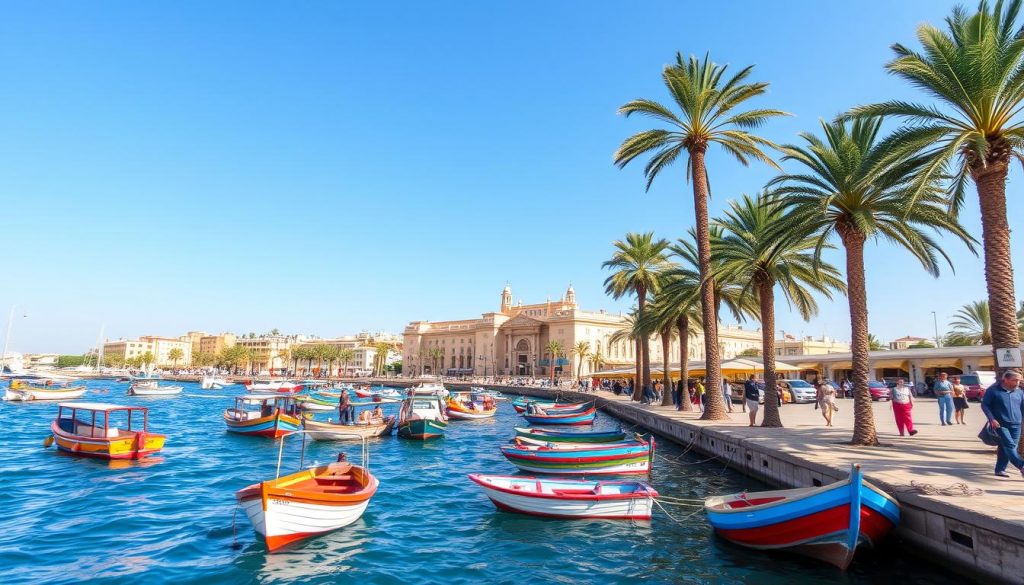
| Seaside Dining Options | Sunset Activities | Local Maritime Culture |
|---|---|---|
| Fresh seafood dishes | Strolling along the Corniche | Observing fishermen at work |
| Traditional Lebanese cuisine | Boat rentals and cruises | Mending fishing nets |
| Waterfront cafes and bars | Enjoying sunset views | Preparing boats for the next day |
Visit the Khan al-Saboun (Soap Museum)
Dive into the world of Tripoli soap making at the Khan al-Saboun (Soap Museum). This museum shows the art of traditional crafts that Tripoli is known for.
The Khan al-Saboun is in the Koura region of Tripoli, Lebanon. It’s famous and listed in the Guinness Book of World Records. It highlights the artisanal techniques and the importance of soap-making in the city.
Walk through the museum and see how “Tripolitan soap” is made. Learn about the process of mixing olive oil, water, and alkaline compounds. You’ll also find out about the natural scents used, like rosewater and jasmine.
| Soap Museum Features | Description |
|---|---|
| Guinness World Record | The Khan al-Saboun Soap Museum is recognized in the Guinness Book of World Records. |
| Eco-friendly Practices | The museum is part of an ecovillage and showcases sustainable soap-making methods. |
| Historical Significance | The museum highlights the centuries-old tradition of Tripoli soap making and its cultural importance. |
| Artisanal Demonstrations | Visitors can witness live demonstrations of the artisanal techniques used in soap production. |
| Soap Shopping | Visitors can purchase authentic, locally-made soaps as souvenirs. |
If you love traditional crafts or want a unique cultural experience, visit the Khan al-Saboun (Soap Museum). It’s a place that will make you appreciate the art of Tripoli soap making even more.
Explore Tripoli’s Religious Architecture
Tripoli, the second-largest city in Lebanon, is known for its rich religious heritage. Walking through its historic streets, you’ll see a mix of architectural styles. Each style shows the area’s diverse culture.
Taynal Mosque
The Taynal Mosque is a highlight in Tripoli, built in 1336 CE. It’s famous for its detailed stone carvings and unique minaret. These features highlight Tripoli’s Tripoli religious sites and Ottoman architecture.
Ottoman-era Religious Sites
Many historical mosques from the Ottoman era add to Tripoli’s religious beauty. The Bourtasi Mosque in the Hadid district, built in 1310 CE, is a great example. These mosques show the strong Islamic influence with their elaborate designs and calligraphy.
Architectural Highlights
Exploring Tripoli’s streets, you’ll see a mix of architectural styles. From the Taynal Mosque’s stone carvings to the Islamic designs of Ottoman-era sites, these historical mosques offer a peek into Tripoli’s cultural heritage.
When you visit these sacred places, remember to respect prayer times and dress codes. They are still active places of worship. Enjoy the calm atmosphere and marvel at the architectural wonders that have lasted through time. They keep Tripoli’s reputation as a center of diverse religious sites.
Local Culinary Experiences and Food Scene
Tripoli’s food scene is a mix of flavors and experiences that show the city’s cultural diversity. Walking the streets, you’ll smell the fresh ka’ak (sesame-covered pastry) and hear the man’ouch (traditional Lebanese flatbread) being cooked. For a real Tripolitan breakfast, try Akra restaurant, famous for its tasty ful and hummus-based dishes.
The old center, Tal, and the new cafés on Dam w Farez Street offer both traditional and modern dining. Enjoy local favorites like crispy falafel, savory shawarma, and fresh seafood from the coast. The Tripoli cuisine and Lebanese food will amaze you with its rich tastes and cultural heritage.
Trying the street food in Tripoli is not just about the taste. It’s also about the city’s lively history and the friendly locals. Dive into the local food culture and let the unique flavors of Tripoli enchant your taste buds.
The above is subject to change.
Check back often to TRAVEL.COM for the latest travel tips and deals.
